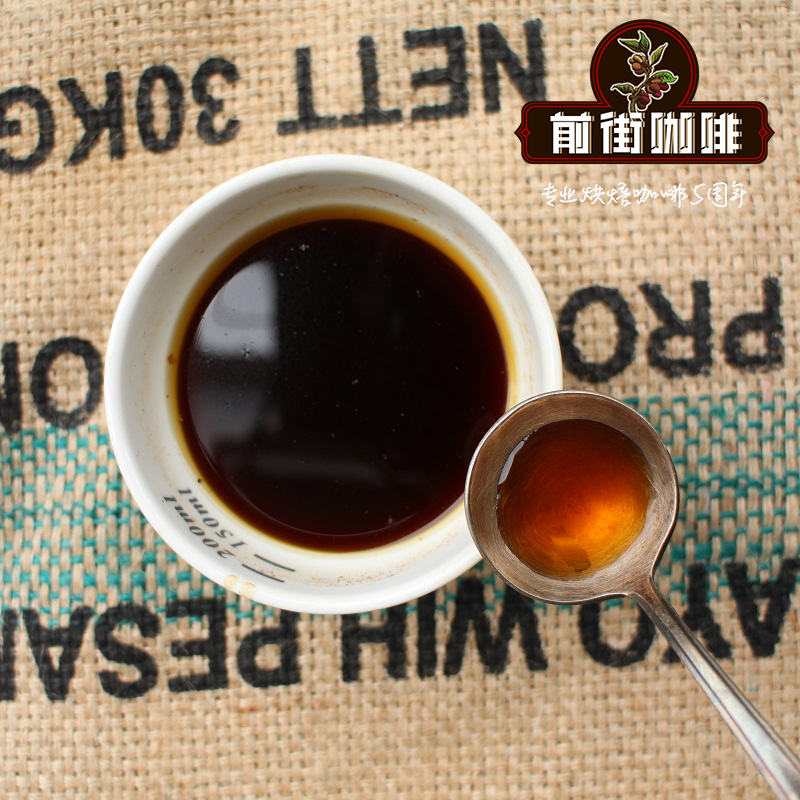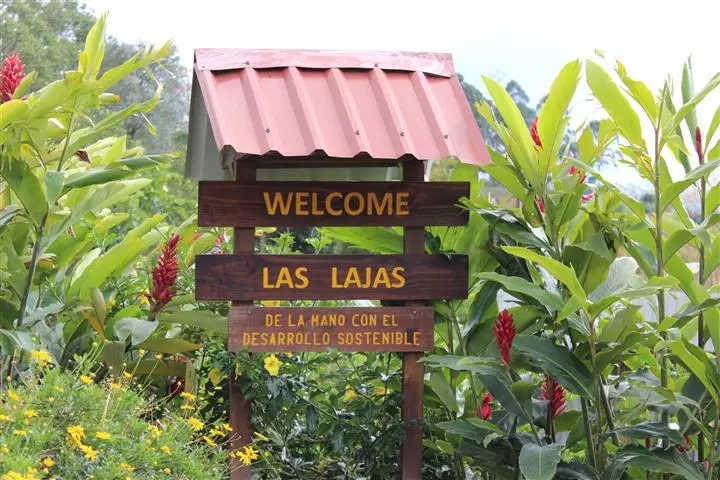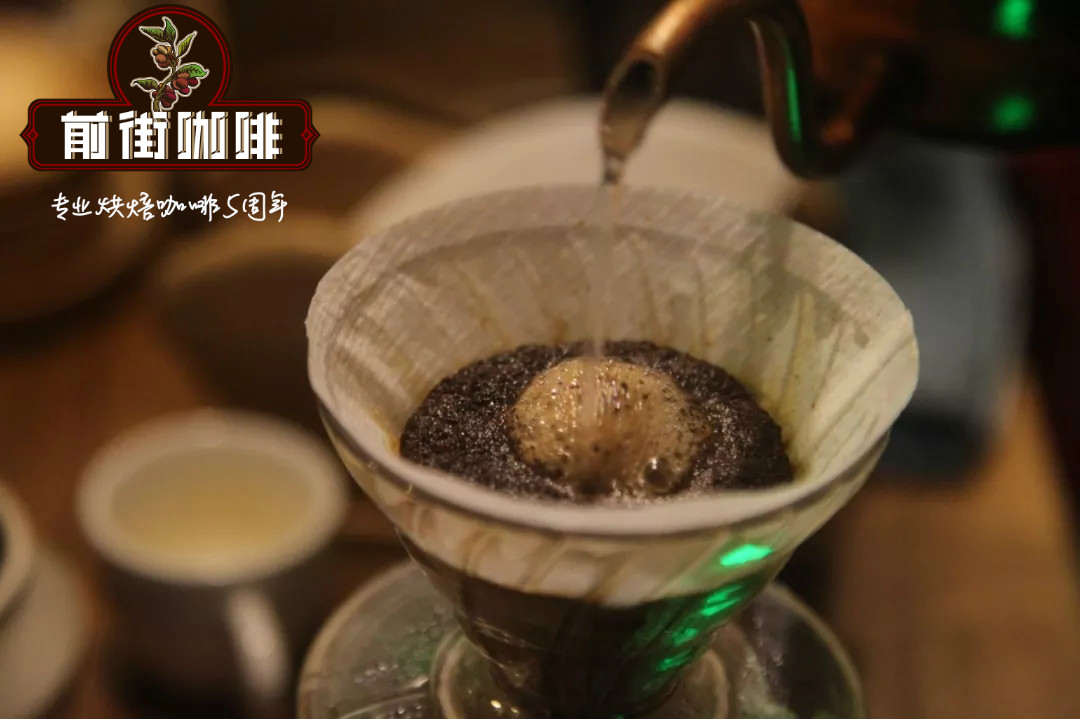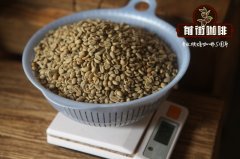Costa Rican Coffee Variety and treatment method _ Las Lajas La Haas Manor raisins Solar

Professional coffee knowledge exchange more coffee bean information please follow the coffee workshop (Wechat official account cafe_style)
"Costa Rican Coffee SL28 raisin Sun-Las Lajas/ La Haas Manor"
By the way, share some recent varieties and treatments of Costa Rican coffee.
If it is different from everyone's imagination, it is a renewal of knowledge.
-

Costa Rica, a famous coffee producer in Central America (nonsense), impressed by the sweetness of Costa Rican coffee. But what does it have to do with Kenya's SL28 across the Atlantic? Bask in the sun, what the devil is the raisin sun.?
Let's talk about SL28 first.
Everyone knows that both SL28 and SL34 have been popular in Kenya for many years (you can visit if you don't know). The huge size comes from the ancient Bourbon, and the unusually high phosphoric acid soil in Kenya gives birth to a unique flavor memory of "berries". There must be a lot of familiar audiences, compared with those Ethiopian beans that seem to be similar in flower and fruit aromas. the recognition is so high that there are no friends.
Good drink is good, but it produces less. In recent years, Kenya has been making improved varieties, and there are fewer and fewer delicious SL28, one drink at a time.
Of course, this Costa Rican SL28 is also introduced from Kenya; even the hometown is so rare, and the delicate children far away from home do not produce much, and the less the quantity, the more expensive it is to take care of. So in Central America, SL28 prices sometimes even compete with Deep-Fried Chicken's "rosy summer".
▼ Las Lajas/ La Jas Manor, Costa Rica
Transplanting across the ocean has changed the soil, climate, altitude, and planting techniques. The taste has also changed.
This Costa Rican SL28 flavor overview is as follows:
Wine, blackcurrant, candied fruit
Of course, your baking positions are not the same, how to express the enchanting and colorful flavor, cooperate with your soul's brewing skills, let you play, like it, Ka!
Come on, we need to talk about the raisin sun.
There is a particularly eye-catching "raisin sun" in Costa Rican coffee treatment.
Since this year's WBC World Cup unveiled various oxygen-related post-treatments (aerobic fermentation, anaerobic fermentation, co-anaerobic fermentation, the more abominable XO treatment? ), it seems that the post-processing of coffee beans has gone to a crazy state, led by honey treatment, which is not enough to count ten little fingers. Apart from all kinds of honey, such as red honey, black honey, yellow honey, gold honey and so on, diamond yellow honey, anaerobic honey treatment, black pearl, black soul, etc have appeared. It seems that there will only be more and more.
Of course, the sun group is not to be outdone to start all kinds of sunshine. We all know that when red fruits are picked and put on the ground or on the shelf with pectin, they are not fermented in a washing tank and dried in the sun, which is said to be full-sun.
(take off the peel and pulp, soak the pulp, soak the fermentation and then wash it: full water washing; people who contain a little or a lot of pectin with mucilage, soaking fermentation or fancy fermentation are called honey treatment, which can also be called incomplete water washing. Here the thickness of the mucus and the number of turns determine the various names of the honey treatment.)
What is the way to bask in raisins? Let's sort out the order first:
The first step of ▼: pick the fruit and arrive at the treatment plant for cleaning at noon on the same day, then dry the African rack for 5 days and turn it every two hours.
The second step of ▼: dry the cement floor in the shade shed for 15 days and lay it into 10--15cm. At this time, after drying every two hours during the day, cover the plastic sheet with semi-isolated air, let it release water vapor inside the plastic sheet, then open the plastic sheet to get in close contact with the air for two hours, and then cover it with plastic sheeting again and again.
Step 3: pile up a hill at night and cover it with black plastic sheeting. Continue to be stuffy up and ferment hard, sweetness rises, wine taste rises, all come!
Step 4: when the moisture is reduced to 11%, the bag is put into the warehouse without sealing, during which the moisture is naturally reduced to 10.5%. The whole process is dried for a long time, and after treatment, the surface is covered with sticky ingredients like raisins.
The state of candied fruit is the same, how sweet you want, will it be sweeter than your first love.
After the post-processing, let's talk about the manor and the farm, and what about organic coffee.
LasLajas Ras Lajas processing Station

LasLajas La Lajas Farm is an officially certified organic farm in central Costa Rica, which is certified by an organic farming system and does not use pesticides, so it chooses more expensive biotechnology to prevent diseases. In post-processing, organic fruits cannot be processed with the same equipment as non-organic fruits, which is so harsh. (currently Laslajas is applying for organic certification in Costa Rica, the European Union and the United States-- China has not applied yet, so online sales cannot fill in organic certification.)
It has to be said that Costa Rica and Panama, as the two most stable coffee producers in Central America, must be far ahead in coffee processing technology and equipment at the source.
Product name: Costa Rica SL28 2018 latest production season micro batch
Treatment: raisin solarization / Costa Rica
Country: Costa Rica
Region: central Valley / CentralVelly
Farm: Laslajas / Las Lajas
Altitude: 1550
Batch number: 815
Summary of flavor: wine, blackcurrant, candied fruit
Qianjie coffee is recommended for brewing by hand.
Filter cup: Hario V60
Water temperature: 90 ℃
Powder / water ratio: 1:15
Degree of grinding: BG 5R (pass rate of Chinese standard No. 20 screen 58%)

Cooking method: 32 grams of water steaming for 32 seconds, injection to 126 grams, and so on when the water level is about to expose the powder bed, continue to inject water to 228 grams, when the water level is about to expose the powder bed, remove the filter cup, (steaming starts) the extraction time is one minute and 50 seconds.
END
Important Notice :
前街咖啡 FrontStreet Coffee has moved to new addredd:
FrontStreet Coffee Address: 315,Donghua East Road,GuangZhou
Tel:020 38364473
- Prev

What does it mean to make coffee by hand? What's the difference between hand-made comprehensive matching and single bean? Front street
Professional coffee knowledge exchange more coffee bean information please follow the coffee workshop (Wechat official account cafe_style) hand-made coffee means? What's the difference between hand-made comprehensive matching and single bean? How to adjust the autumn hand matching in Qianjie? Hand-mixed coffee beans are also called formula coffee beans, mixed coffee beans, blended coffee beans (mainland), and bl in English.
- Next

Costa Rican Coffee Manor Tour _ where can I buy Costa Rican coffee?
Professional coffee knowledge exchange more coffee bean information please follow the coffee workshop (Wechat official account cafe_style) Costa Rica is geographically located in China and the United States, there is a scenic tropical rain forest, there are warm and cheerful people, but also coffee famous for its high quality in the global market. Combined with natural resources, people combine agriculture with commercial culture, and in recent years,
Related
- Detailed explanation of Jadeite planting Land in Panamanian Jadeite Manor introduction to the grading system of Jadeite competitive bidding, Red bid, Green bid and Rose Summer
- Story of Coffee planting in Brenka region of Costa Rica Stonehenge Manor anaerobic heavy honey treatment of flavor mouth
- What's on the barrel of Blue Mountain Coffee beans?
- Can American coffee also pull flowers? How to use hot American style to pull out a good-looking pattern?
- Can you make a cold extract with coffee beans? What is the right proportion for cold-extracted coffee formula?
- Indonesian PWN Gold Mandrine Coffee Origin Features Flavor How to Chong? Mandolin coffee is American.
- A brief introduction to the flavor characteristics of Brazilian yellow bourbon coffee beans
- What is the effect of different water quality on the flavor of cold-extracted coffee? What kind of water is best for brewing coffee?
- Why do you think of Rose Summer whenever you mention Panamanian coffee?
- Introduction to the characteristics of authentic blue mountain coffee bean producing areas? What is the CIB Coffee Authority in Jamaica?

